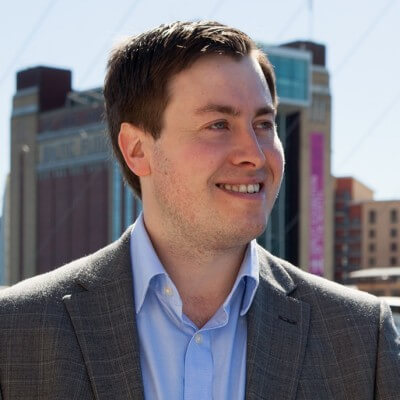Whether you’re an online dropshipping business or a multi-channel retailer, an eCommerce platform is one of the most important factors that will determine your success.
Interestingly, global eCommerce retail sales were roughly $1.3 trillion in 2014.
But nearly 10 years later, the sales are at a staggering $5.7 trillion in 2023 and are expected to grow significantly in the coming years. This not only necessitates having an eCommerce platform for a business but also highlights the importance of adopting the best practices.
With the right software development techniques, you can scale your online sales operations to meet the changing market conditions and demand shifts efficiently. And that’s what we’ll discuss in this article.
Scalability In eCommerce: 5 Proven Practices
Modernising your services through eCommerce development is important for one main reason — customer experience. When your customers interact with your online store, you want them to leave with a good first impression and a remarkable user experience.
However, a high visitor count on an eCommerce store can lead to performance issues like slow reloading times and frequent crashes, among others. These issues magnify when your platform isn’t equipped with the right scalability features.
When an eCommerce platform is scalable, it can handle more users smoothly. For instance, even with a sudden surge of online visitors, a scalable platform can accommodate larger transactions and ensure stable performance without delays or crashes. Here are the five software development eCommerce practices that can help you achieve that.
1. Breaking down the system into independent modules
One of the best ways to make sure your eCommerce platform is scalable is to break it down into small, independent modules. This means dividing the system into smaller components, each one with a specific function.
For example, you can separate the product catalog module so it can handle more items and categories. To further optimize this module, consider using a catalog maker to automate product information management and streamline catalog creation. You can scale it up or down over time without affecting the performance of the rest of the system.
As a result, your eCommerce platform has greater flexibility because you can optimize different parts individually. This also simplifies maintenance as you can easily test and deploy changes to reduce the risk of bugs. Additionally, you can reuse independent modules to expand the platform.
2. Adopting a microservices approach
There’s another software development eCommerce strategy known as the microservices approach. Using this technique, you can develop and deploy individual modules separately from the complete eCommerce platform.
This is dissimilar to the traditional monolithic software architecture, where the platform’s main components are tightly packed together. However, microservices is a “loosely combined” architecture where components function independently but still communicate with each other.
You will have to utilize reliable APIs to ensure seamless communication. An example of this could be Netflix, which uses the microservices approach to scale efficiently without disrupting the user experience.
3. Establishing automated testing and CI/CD pipelines
Since your eCommerce platform typically goes through continuous development and code integrations, you can refine the process to make it more efficient.
You can do this through “continuous delivery” or “CD,” which is a technique that goes a step further than the conventional process called “continuous integration.” It allows you to automate the deployment process so you can test new features and updates quickly before they reach online users.
Thus, you can ensure that the code is always in a deployable state so you can readily test new features, tools, and services on your eCommerce platform. Furthermore, automated deployment reduces the need for manual intervention, enabling you to focus on other key aspects of platform development.
Plus, if you automate testing and CI/CD pipelines, your platform benefits from quicker iteration cycles. Hence, the online store will be more capable of meeting sudden market demands and responding to customer feedback.
4. Leveraging cloud services
Have you ever witnessed a performance drop in your eCommerce platform, especially during peak shopping seasons? Well, that usually happens due to a major spike in user traffic, which strains an eCommerce platform that is unequipped with scalability features.
Many popular services like Netflix or Spotify use cloud services to mitigate risks like those. Netflix uses Amazon Web Services (AWS) — the world’s biggest cloud — to give users access to multimedia content. Thousands of users can access terabytes of movies, shows, and documentaries within a few seconds thanks to Netflix using AWS’s “Infrastructure-as-a-Service (IaaS)” model.
Using the cloud will help your eCommerce platform through load balancing and auto-scaling. Cloud platforms can scale with your platform’s operational needs. Moreover, they bring numerous managed services like machine learning, optimized database management, and so on.
5. Optimizing databases with scaling strategies
Database optimization can be achieved using different strategies. For instance, you can do that through sharding and replication — two of the most popular methods in this regard.
With sharding, you can break down your database into more manageable pieces — smaller data sets or “shards.” Since each shard will be on a separate server, the load on your eCommerce platform can be distributed more efficiently to reduce the risk of downtime and improve performance.
Similarly, replication will help you create multiple copies of your database so you can distribute it across a number of different services. If one server crashes, the other will share the load and provide the necessary data for smooth performance.
Conclusion
These strategies can help you develop a more robust, scalable eCommerce platform that can grow alongside your business. Be it a spike in platform activity due to Cyber Mondays or Black Fridays, with independent modules and microservices. Your platform can handle increased demand efficiently.
Moreover, automated testing and CI/CD pipelines can help you make the platform more adaptive. You can incorporate key updates without compromising performance. Combined together, these strategies can help you unlock a more reliable and efficient platform.




